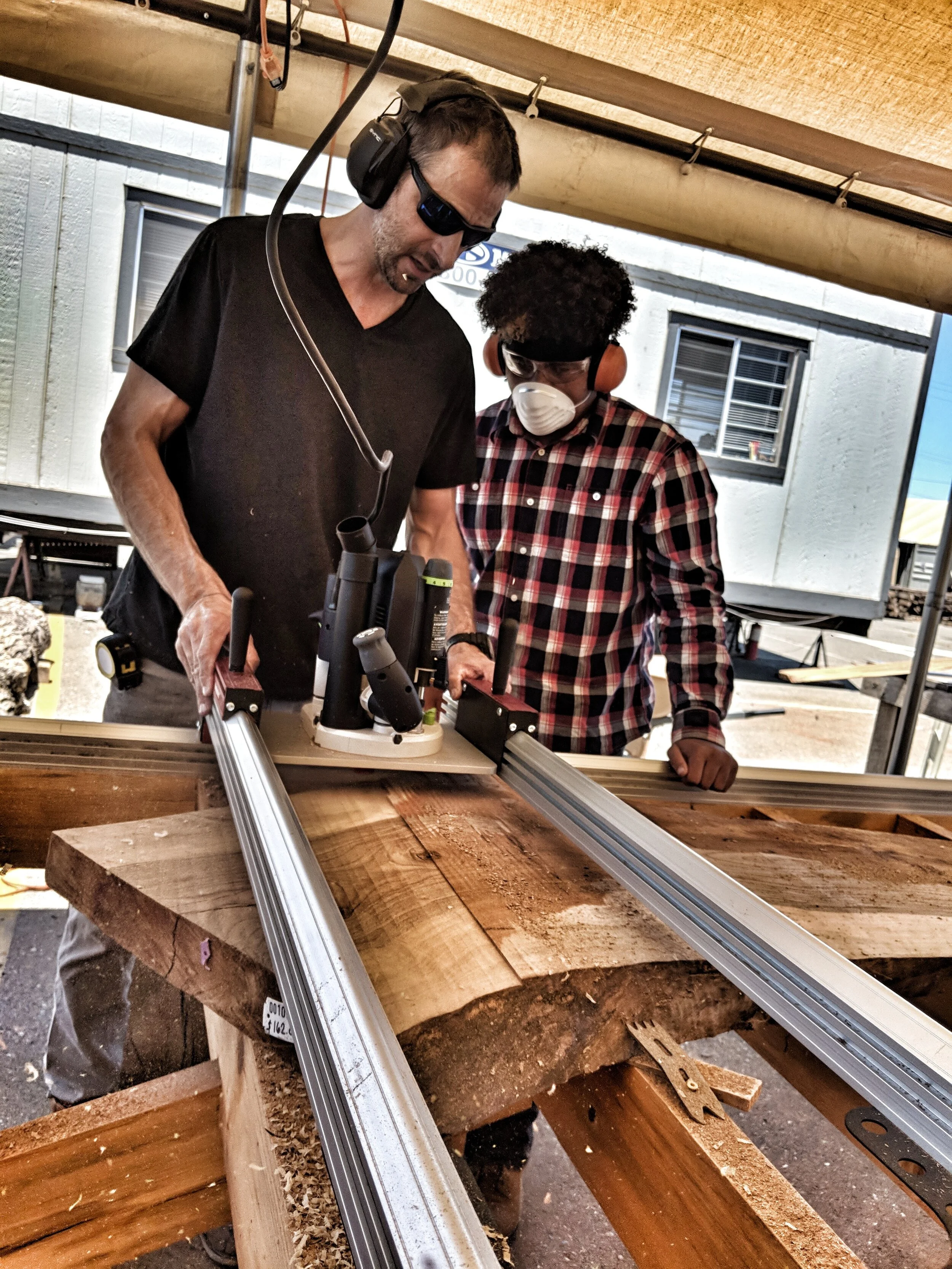Trainee learning to make timber from dead urban trees
With grant funding from the Urban and Community Forestry program, Urban Wood Rescue, a program administered by the Sacramento Tree Foundation, is transforming dead trees from around the Sacramento region into useful lumber. By repurposing the wood, rather than sending it to a landfill, Urban Wood Rescue prevents these trees from decomposing, which prevents the release of carbon they have captured into the atmosphere.
“By using urban material, we are keeping perfectly good material out of the landfill or shredder,” says Steven Tiller, a Sacramento area woodworker. “Urban lumber is always far more unique than commercial saw mill material. It has character and history.”
Urban Wood Rescue demonstrates a sustainable business model that can transform a waste stream into usable products and works of art. The project supports individuals from disadvantaged communities by offering job training and internship opportunities in partnership with Green Tech Education & Employment, an organization that focuses on preparing youth for careers that contribute to developing sustainable communities. Together, these organizations are helping to support the emergence of a statewide green economy and workforce.
“There is something powerful in working with people to develop skills around urban forestry, turning logs into lumber, and woodworking,” says Bethany Hannah, program manager for Urban Wood Rescue. “It creates a sense of self-reliance, empowerment, accomplishment, and a connection to the community and nature in a unique and long-lasting way.”
The Urban Wood Rescue program aims to process at least 500 logs per year. Every tree that is removed is replaced with a new planted tree. This year, the organization will plant an additional 333 trees.
Big log with sign “Carbon sequestered in this log: 4 MTCO2e”



